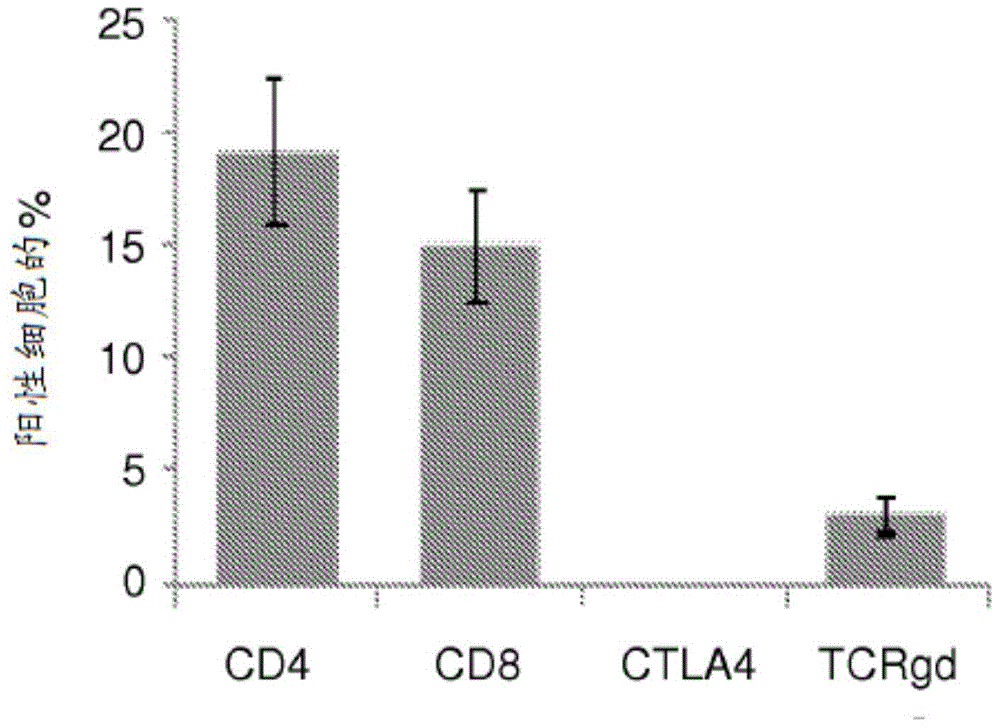Cellular markers for the diagnosis of Alzheimer's disease and for the progression of Alzheimer's disease
一种阿尔茨海默氏、细胞的技术,应用在疾病诊断、生物测试、生物材料分析等方向,能够解决免疫系统不能提供支持等问题
- Summary
- Abstract
- Description
- Claims
- Application Information
AI Technical Summary
Problems solved by technology
Method used
Image
Examples
Embodiment 1
[0105] Example 1. Precision and Robustness of Results in Healthy Volunteers
[0106] In the study, the distribution of individual markers on total live peripheral blood mononuclear cells (PBMC) was first tested using blood from young, healthy volunteers in order to check the precision and robustness of the measurements, and then Tested in a controlled study comparing Alzheimer's patients with matched age controls.
[0107] Freshly isolated PBMC from healthy volunteers were labeled with fluorescein isothiocyanate (FITC), phycoerythrin (PE), or allophycocyanin (APC) against CD3, CD14, CD19, CD11c, CD34, and CD15. Nuclear antibodies were stained, and the ratio and expression level of each of these markers were analyzed by fluorescence-activated cell sorting (FACS) ( Figures 1A to 1B ).
[0108] Freshly isolated PBMCs from healthy volunteers were double-stained with APC-labeled mononuclear antibodies against CD3 and FITC- or PE-labeled mononuclear antibodies against CD4, CD8, CT...
Embodiment 2
[0112] Example 2. Alzheimer's patients show γδ-T cells and CD14 in PBMC compared to healthy controls + / CD16 + Cells have elevated levels of both.
[0113] The studies described herein were performed using approximately 32 blood samples, approximately half of which were obtained from Alzheimer's patients and half of which were obtained from age-matched healthy volunteers. In addition, seven blood samples from patients with amyotrophic lateral sclerosis (ALS), another neurodegenerative disease, were analyzed. All blood samples were coded and analysis of the results was performed in a blinded fashion.
[0114] Table 2: Differential counts of peripheral monocytes (% of total PBMC)
[0115]
[0116] The proportions of the PBMC population (monocyte-CD14, T-cell-CD13, and B-cell-CD19) as measured by flow cytometry are presented in Table 2, indicating that there were no significant differences between the patients and the healthy controls. difference.
[0117] Flow cytometry ...
PUM
 Login to View More
Login to View More Abstract
Description
Claims
Application Information
 Login to View More
Login to View More - R&D
- Intellectual Property
- Life Sciences
- Materials
- Tech Scout
- Unparalleled Data Quality
- Higher Quality Content
- 60% Fewer Hallucinations
Browse by: Latest US Patents, China's latest patents, Technical Efficacy Thesaurus, Application Domain, Technology Topic, Popular Technical Reports.
© 2025 PatSnap. All rights reserved.Legal|Privacy policy|Modern Slavery Act Transparency Statement|Sitemap|About US| Contact US: help@patsnap.com



